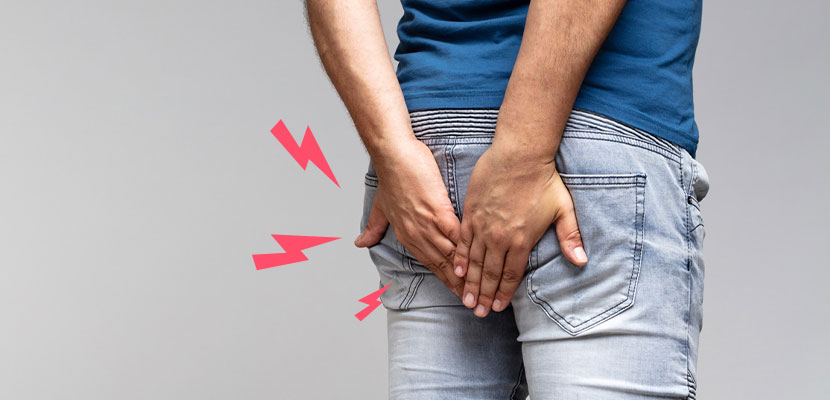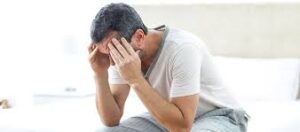Are Piles Common? Piles Symptoms, Causes, Diagnosis & Treatment
Hemorrhoids are also referred to as piles in certain circles. Hemorrhoids are collections of inflammatory tissue that form in the anal canal of the genital area. They are made up of blood arteries, support tissue, muscle, and elastic fibres, among other things.
Piles, their causes, how to detect and treat them, as well as the consequences they may have on the body, will all be discussed in detail in this article.
Hemorrhoids, commonly known as piles, are bulging veins located in the lower anus and rectum. These vessels’ walls might get inflamed as they extend.
Although haemorrhoids might be uncomfortable, they usually go away on their own. Changes in lifestyle, such as eating more fibre and exercising, can help alleviate symptoms and reduce the risk of future haemorrhoids.
Table of Contents
Are Piles Common?
Many individuals suffer from piles, although the signs and symptoms are not always apparent. Hemorrhoids produce obvious symptoms in at least 50% of persons in the United States (U.S.) before the age of 50 years, according to the National Institutes of Health.
What Are Piles?
Types Of Piles
Internal or external haemorrhoids can occur. Internal haemorrhoids are graded by healthcare experts depending on whether they remain in the rectum or extend out of the anus.
Internal hemorrhoids
Internal haemorrhoids are internal haemorrhoids that are not apparent from the outside. They are usually not painful. Rectal bleeding is frequently the first symptom of internal haemorrhoids.
A prolapsed hemorrhoid is an internal hemorrhoid that protrudes through the anus. This disorder, which can be unpleasant, is caused by a weakening of the muscles around the anus.
Internal haemorrhoids are graded from 1 to 4 by healthcare professionals based on the degree of prolapse:
Hemorrhoids of grade 1 persist in the rectum without prolapsing (protruding out of the anus).
When a person passes faeces and then returns inside on their own, grade 2 haemorrhoids prolapse.
Hemorrhoids of grade 3 have prolapsed and must be pulled back in.
Hemorrhoids in Grade 4 have prolapsed and cannot be put back in.
External hemorrhoids
External haemorrhoids form in the skin around the anus and are so noticeable.
Because this area of the body has more sensitive nerves, external haemorrhoids can be excruciatingly painful. External or internal haemorrhoids may bleed if you strain when passing faeces.
Symptoms
The majority of the time, the symptoms of piles are not life-threatening. They usually go away on their own after a few days of treatment.
Individuals suffering with piles may encounter the following signs and symptoms:
- It is possible to feel a firm, perhaps painful mass around the anus. It is possible that it contains coagulated blood. Thrombosed external haemorrhoids are blood-filled pimples that appear on the skin’s surface.
- After passing a stool, a person suffering from piles may have the sensation that their intestines are still partially filled.
- After having a bowel movement, bright crimson blood is seen.
- The region surrounding the anus is irritated, red, and uncomfortable to the touch.
- During the passage of a stool, there is discomfort.
Pile formation might progress to a more serious situation. This may involve the following:

- A significant increase in anal bleeding, which may also result in anaemia infection
- Incontinence, or the inability to regulate bowel motions, is a medical condition.
- It is possible to develop an anal fistula, which is a new channel that is formed between the surface of skin near the anus and the inside of the anus. A strangulated hemorrhoid, in which the blood supply to the hemorrhoid is cut off, can result in complications such as infection or a blood-clot formation.
On the exterior margin of the anus, external piles are formed as tiny lumps. They are very irritating and may become severe if a blood clot forms, since the blood clot might prevent the flow of blood from reaching the skin. External piles that have thrombosed, as well as haemorrhoids that have clotted, need prompt medical attention.
Causes
Under strain, the blood vessels surrounding the anus and in the rectum will stretch and expand or bulge, resulting in the formation of piles. It is possible that this is due to:
- Constipation that lasts a long time
- Exercising with high weights and having chronic diarrhoea
- When passing a stool during pregnancy, you may experience straining.
- The proclivity to form piles may also be inherited, and the likelihood of developing heaps rises with age.
Treatments
Home treatments
The following home remedies may help alleviate hemorrhoid symptoms:
- Over-the-counter (OTC) lotions and ointments for external haemorrhoids can help relieve itching, irritation, and swelling.
- Fiber supplements, such as methylcellulose (Citrucel) and psyllium (Metamucil), can aid with constipation and haemorrhoids.
- Applying ice packs or cold compresses to the afflicted region may help relieve discomfort.
- A sitz bath includes sitting in a small tub of warm water. Taking one many times per day may help relieve hemorrhoid discomfort.
- Analgesics: Discomfort relievers such as aspirin, ibuprofen, and acetaminophen may aid with hemorrhoid pain.
Medications
Over-the-counter (OTC) drugs: These are pharmaceuticals that may be purchased at a pharmacy or online. Pain relievers, ointments, lotions, and pads are some of the medications that may be used to alleviate redness and swelling around the anus.
Although over-the-counter medicines do not cure piles, they may alleviate the symptoms. They should not be used for more than 7 days in a row since they might cause additional irritation of the region and thinning of the skin if used for too long. A medical expert should always be consulted before taking two or more drugs at the same time.

Corticosteroids are medications that may help to decrease inflammation and discomfort. Medications for constipation: If a person with piles suffers from constipation, the doctor may prescribe laxatives. These may make it easier for the individual to pass stools and can also relieve pressure on the lower colon.
Surgical options
Around 1 in 10 people with piles will end up needing surgery.
An elastic band is wrapped around the base of the pile, cutting off its blood supply, which is performed by the doctor. The hemorrhoid will eventually come out after a few days. This method is successful for treating any haemorrhoids with a grade of less than IV severity.
Sclerotherapy is a procedure in which medicine is injected into the hemorrhoid to cause it to shrink. Eventually, the hemorrhoid will shrivel up and disappear. This is an excellent treatment for haemorrhoids of grade II and III and is a viable alternative to banding.
Infrared coagulation, often known as infrared laser coagulation, is a procedure in which a device is used to burn the hemorrhoid tissue to death. This procedure is used to treat haemorrhoids of grade I and II severity.
Hemorrhoidectomy is a surgical procedure in which the extra tissue that is causing the bleeding is removed. This may be accomplished in a variety of methods, including the use of a local anaesthetic and sedation, a spinal anaesthetic, or a general anaesthetic, among other techniques. There is a small risk of consequences, including difficulty passing stools as well as urinary tract infections, with this form of surgery being the most successful for entirely eradicating piles.
Hemorrhoid stapling is a procedure in which blood supply to the hemorrhoid tissue is restricted. This operation is frequently less unpleasant than hemorrhoidectomy since it is less invasive.
This operation, on the other hand, may raise the chance of hemorrhoid recurrence and rectal prolapse, which is a condition in which a portion of the rectum pushes through the anus.
Nonsurgical Treatment Options
If home cures do not relieve haemorrhoids, a person may require more therapy. Nonsurgical alternatives include: Trusted Source:
- Rubber band ligation is an outpatient surgery for internal haemorrhoids that includes wrapping an elastic band around the hemorrhoid’s base to cut off its blood supply. Either the hemorrhoid will shrink or fall off.
- Sclerotherapy is a technique in which doctors inject a liquid into an internal hemorrhoid. This results in the formation of a scar, which shuts off blood flow to the hemorrhoid, causing it to shrink.
- Infrared photocoagulation: By shining an infrared light on an internal hemorrhoid, scar tissue forms. This lowers the size of the hemorrhoid by cutting off its blood supply.
- Electrocoagulation: A modest electric current is sent into a hemorrhoid to cause scarring. Because the scar tissue shuts off the blood supply, the hemorrhoid shrinks.
These operations are frequently performed by a doctor while the patient is sedated.
Diagnosis
A doctor would most likely inquire about a person’s medical history before doing a physical examination and other tests to rule out haemorrhoids. They will search for external haemorrhoids in the region surrounding the anus, which includes examining for:
- lumps
- small tears in the anus
- irritated skin
- prolapsed internal hemorrhoids
To identify internal haemorrhoids, they may also do a digital rectal exam. This is checking the anus manually with a gloved, greased finger to look for blood, sensitivity, and lumps.
If a digital rectal exam does not reveal internal haemorrhoids, a doctor may use a tiny equipment called an anoscope to examine the anal and rectal walls. Internal haemorrhoids may be visible as bulges through the device.
Prevention
Changes in lifestyle can help reduce the chance of haemorrhoids. These are some examples:
- Eating a nutritious diet: Consuming lots of fiber-rich foods including fruits, vegetables, and whole grains will help keep stools soft. Taking over-the-counter fibre supplements and staying hydrated can also help with constipation.
- Avoiding straining: When using the toilet, a person should attempt not to strain. Straining strains the veins in the lower rectum.
- Going to the bathroom when necessary: It is better to avoid having to wait to use the restroom. The more someone waits, the drier the stools get.
- Getting frequent physical activity: Exercise helps stool pass through the intestine, resulting in more regular bowel movements.
- Maintaining a healthy body weight: Being overweight increases your chances of developing haemorrhoids.
Outlook
Hemorrhoid symptoms usually go away on their own with conservative treatment, but there is a 10-50% chance that they may recur. The likelihood of haemorrhoids recurring after surgery is less than 5%.

Sometimes complications develop, such as:
- Bleeding: Anyone experiencing chronic or excessive bleeding, with or without pain, should seek medical attention immediately.
- A strangulated hemorrhoid occurs when the muscles around the anus obstruct the blood flow to a prolapsed hemorrhoid. This can be really painful.
- Anemia is caused by significant, continuous blood loss from haemorrhoids. This happens when the body does not have enough red blood cells circulating.
- Blood clots: Blood can clot within a hemorrhoid at times. External haemorrhoids may be quite uncomfortable.
- The blood clot may need to be removed by a surgeon.
- Infection: Ulceration and infection are possible side effects of therapy.
- Urinary retention: Around 15% of persons have trouble passing urine following internal hemorrhoid surgery.
- Urinary retention will affect 30-50% of persons after surgery for external haemorrhoids.
- If a person’s haemorrhoids do not improve after a week or if new haemorrhoids occur, he or she should consult a doctor.
Significant anal discomfort, copious rectal bleeding, or fever may also necessitate medical treatment. Aside from haemorrhoids, illnesses such as colorectal and anal malignancies can induce rectum bleeding.
Summary
Hemorrhoids are frequent, affecting around 50% of persons over the age of 50. While symptoms might be excruciating, they usually improve after a few days of home therapy. Changes in lifestyle can also aid in the prevention of haemorrhoids.
If hemorrhoid symptoms linger for more than a week or problems develop, a person may require medical attention. If specific symptoms arise, such as significant bleeding, intense pain, or fever, a person should see a doctor. These might be symptoms of something else.
